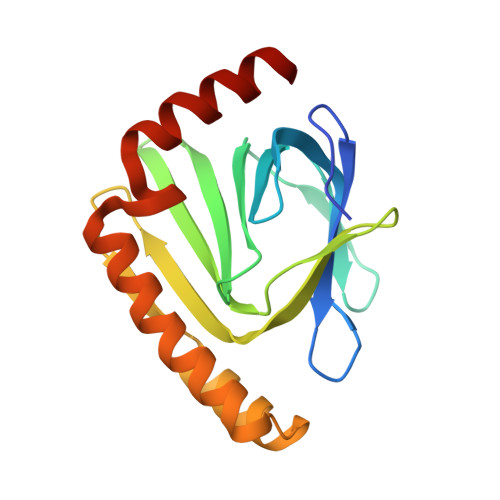The structural mechanism for the nucleoside tri- and diphosphate hydrolysis activity of Ntdp from Staphylococcus aureus.
Wang, Z., Shen, H., He, B., Teng, M., Guo, Q., Li, X.(2021) FEBS J 288: 6019-6034
- PubMed: 33955674
- DOI: https://doi.org/10.1111/febs.15911
- Primary Citation of Related Structures:
7D8G, 7D8I, 7D8L, 7D8Q - PubMed Abstract:
Staphylococcus aureus is a well-known clinical pathogenic bacterium. In recent years, due to the emergence of multiple drug-resistant strains of S. aureus in clinical practice, S. aureus infections have become an increasingly severe clinical problem. Ntdp (nucleoside tri- and diphosphatase, also known as Sa1684) is a nucleotide phosphatase that has a significant effect on the proliferation of S. aureus colonies and the killing ability of the host. Here, we identified the nucleoside tri- and diphosphate hydrolysis activity of Ntdp and obtained the three-dimensional structures of apo-Ntdp and three substrate analog (ATP γ S, GDP β S, and GTP γ S) complexes of Ntdp. Through structural analysis and biochemical verification, we illustrated the structural basis for the divalent cation selectivity, substrate recognition model, and catalytic mechanism of Ntdp. We also revealed a possible basal functional pattern of the DUF402 domain and hypothesized the potential pathways by which the protein regulates the expression of the two-component regulatory factor agr and the downstream virulence factors. Overall, the above findings provide crucial insights into our understanding of the Ntdp functional mechanism in the infection process.
- National Synchrotron Radiation Laboratory, Hefei National Laboratory for Physical Sciences at Microscale, School of Life Sciences, University of Science and Technology of China, Hefei, China.
Organizational Affiliation:



















